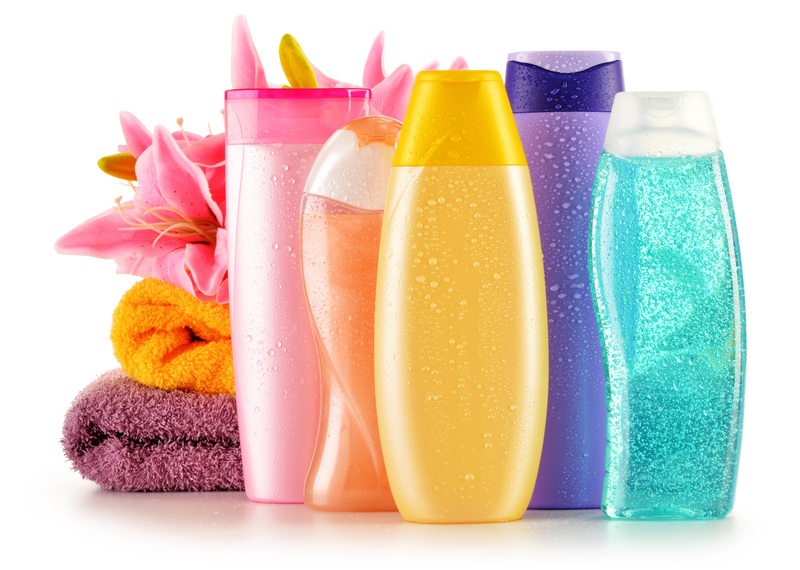Expert Advice on How to Remove Damp Odor
Posted on 02/07/2025
Expert Advice on How to Remove Damp Odor: A Comprehensive Guide
Damp odor is a pervasive and unwelcome smell that can infiltrate homes, basements, closets, cars, and even clothes. Often associated with mold and mildew, a damp smell can not only be unpleasant but also signal underlying moisture problems that may affect your living environment and health. If you're battling the persistent stench of moisture and mustiness, you are not alone. This detailed guide provides expert tips and actionable steps on how to eliminate damp odor effectively and prevent its return.

Understanding the Source of Damp Odor
Before tackling the challenge of removing damp odors, it's vital to understand what causes them. The smell of dampness is typically due to mold, mildew, or bacteria thriving in places where moisture is abundant, and ventilation is lacking.
Main Causes of Dampness and Musty Odors
- Leaking Pipes or Roofs: Hidden leaks feed fungi growth, leading to rotten odors.
- Poor Ventilation: Stagnant air traps humidity, making spaces smell musty.
- Flooding or Water Damage: Residual water breeds mold if not dried properly.
- Condensation: Common in basements, bathrooms, and kitchens with fluctuating temperatures.
- Wet Clothing or Fabrics: Leaving wet materials in enclosed spaces encourages mold growth.
Expert Tip: To effectively remove damp odors, always address the root cause of excess moisture.
How to Remove Damp Odor from Your Home
Now that we know what we are dealing with, let's dive into professional advice on how to remove a damp odor from various areas of your house.
Step 1: Find and Eliminate the Moisture Source
- Inspect for leaks: Check pipes, under sinks, attic spaces, roofs, and walls. Repair any plumbing or structural leaks immediately.
- Look for visible mold: Check for black, green, or white splotches on walls, ceilings, near windows, and behind furniture.
- Check ventilation: Ensure proper airflow in all rooms by opening windows or using vents and fans.
Removing the source of moisture is paramount to stopping the odor at its origin.
Step 2: Dry Out the Affected Area
- Use a dehumidifier: Place it in the affected rooms to pull moisture out of the air.
- Open windows and doors: Natural ventilation helps dry out damp spaces.
- Apply fans: Use portable fans to increase air movement and quicken the drying process.
- Remove wet items: Take out rugs, curtains, cushions, and any materials that are retaining moisture.
Speed is crucial: The quicker you dry out a damp area, the less chance mold and bacteria have to proliferate and produce odors.
Step 3: Clean and Disinfect Surfaces
- Wash hard surfaces: Use a solution of vinegar and water, or a mild bleach solution (1 cup bleach per gallon of water) to scrub moldy areas. Always wear protective gloves and ensure proper ventilation.
- Steam clean carpets and upholstery: For persistent odors in fabrics or carpets, steam cleaning can remove deep-seated smells and mold spores.
- Wash textiles: Machine wash curtains, cushion covers, and clothing with a cup of white vinegar or baking soda added to the detergent to neutralize musty odors.
- Clean walls and ceilings: Wipe down painted or tiled surfaces with disinfectant to kill odor-causing microbes.
Step 4: Use Natural Odor Absorbers
- Baking soda: Place open boxes or bowls of baking soda in closets, cabinets, or rooms to absorb residual smells.
- Activated charcoal: Known for its odor-absorbing powers, charcoal bags remove moisture and neutralize smells in small spaces.
- White vinegar: Setting out bowls of white vinegar overnight can help draw odors from the air.
- Cat litter: Unscented cat litter in a container absorbs excess moisture and a musty odor from enclosed spaces.
Do not simply mask the odor with air fresheners--true dampness odor removal requires eliminating the source and neutralizing lingering smells.
Step 5: Apply Preventive Measures
- Seal cracks: Use caulk or sealant in walls, floors, and around windows to prevent moisture intrusion.
- Use moisture barriers: Install vapor barriers in basements, crawl spaces, or under floors prone to dampness.
- Install exhaust fans: Place exhaust fans in bathrooms, kitchens, and laundry rooms to minimize humidity.
- Store items properly: Avoid stacking cardboard boxes or storing clothes in damp basements.
Prevention is the best way to avoid the return of a damp, musty odor in the future.
How to Remove Damp Odor from Clothes and Fabrics
Garments and linens can pick up musty smells surprisingly quickly, especially if they're left wet or stored in humid areas. Here's the expert advice for removing damp odor from clothing:
- Wash with vinegar: Add 1 cup of white vinegar to your washing machine along with detergent. Vinegar neutralizes odors without leaving a strong smell. For tougher odors, let items soak in vinegar and water for 30 minutes before washing.
- Baking soda boost: Add 1/2 cup of baking soda to the wash to further eliminate stubborn damp smells.
- Dry thoroughly: Air-dry clothes in direct sunlight whenever possible. Sunlight is a natural disinfectant and helps kill odor-causing bacteria.
- Sanitize the washing machine: Sometimes, the machine itself harbors mold. Run a hot wash cycle with 2 cups of white vinegar and no laundry to clean the drum.
Specialized Advice for Removing Damp Odor from Specific Areas
1. Basements
- Install a high-capacity dehumidifier and monitor humidity (keep below 60%).
- Use mold-resistant paint on walls and floors.
- Store items in plastic bins instead of cardboard.
- Seal all foundation cracks and ensure gutters direct water away from the house.
2. Closets
- Keep closet doors slightly open to encourage air circulation.
- Use moisture absorbers such as silica gel packets or moisture-absorbing hangers.
- Rotate wardrobe contents and avoid overfilling shelves.
3. Cars
- Locate and fix leaks (commonly from windows, doors, or sunroofs).
- Dilute white vinegar with water to wipe upholstery and carpets.
- Leave charcoal bags or baking soda containers inside the car overnight.
- Use the car heater and AC on full blast to thoroughly dry interior spaces.
4. Bathrooms
- Run an exhaust fan during and after showers.
- Keep shower curtains spread out to dry, and hang towels after each use.
- Clean visible mold and mildew promptly with specialized bathroom cleaners.
The Importance of Professional Intervention
For persistent or severe damp odors--especially those accompanied by visible mold, persistent health symptoms (such as allergies or asthma), or structural issues--it is wise to seek professional help. Mold remediation specialists have the expertise and equipment to safely remove large mold infestations and thoroughly dry out buildings, ensuring the complete and safe removal of damp smell hazards.
- When to call a professional:
- You find large areas (10+ square feet) covered in mold.
- There is chronic water seepage or flooding.
- You experience unexplained but persistent musty odors after DIY treatments.
Frequently Asked Questions on Removing Damp Odor
Can an air purifier help with damp odors?
Yes, an air purifier equipped with a HEPA filter and activated charcoal can help capture mold spores and neutralize musty smells, especially in combination with moisture control.
Why does the damp smell keep coming back?
If the underlying moisture issue isn't fully resolved, musty odors will recur. Check for hidden leaks, inadequate ventilation, or improper cleaning--these are common culprits.
Is it safe to live with a damp odor in my home?
A persistent damp smell can be a health risk, especially for children, the elderly, and people with respiratory conditions. Mold spores and bacteria contribute to poor indoor air quality and should be addressed promptly.
What household products work best for removing musty odors?
White vinegar, baking soda, borax, and hydrogen peroxide are all safe, effective, and affordable for neutralizing and preventing damp odors.

Conclusion: Breathe Freely by Removing Damp Odors the Expert Way
Eradicating damp odor involves more than just covering up the smell--it requires a thorough, methodical approach to remove moisture, clean affected areas, and maintain a dry environment. By following this expert advice for removing damp and musty odors, you will protect your home and health, improve indoor air quality, and enjoy a fresh, clean environment year-round.
Remember, if the odor persists despite your best efforts, don't hesitate to call in professionals. Acting swiftly and thoroughly is the key to successfully banishing damp odors for good.
Quick Recap: Top Tips to Remove Damp Smells
- Locate and fix all sources of moisture.
- Dry out affected spaces quickly.
- Clean and disinfect thoroughly to eliminate mold or mildew.
- Use natural odor absorbers for lingering smells.
- Prevent recurrence with smart home practices.
With diligence and the right expert advice, removing damp odor from your home, car, and belongings is not just possible--it's entirely achievable!


